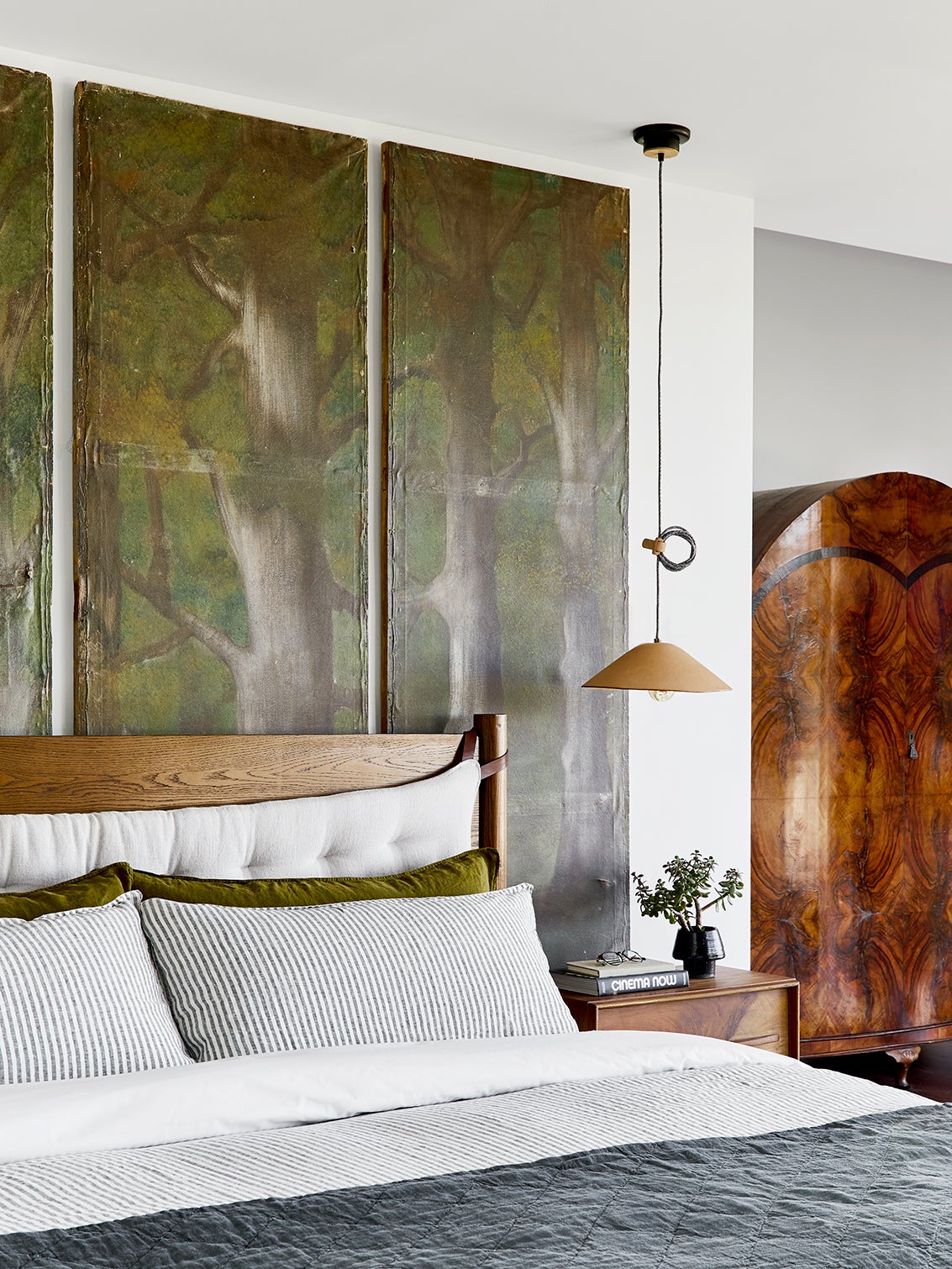The First Thing Domino Editors Do When They Decorate a Room
One uses VR goggles, and, yes, we can explain.
Updated Oct 12, 2018 12:22 PM
We may earn revenue from the products available on this page and participate in affiliate programs.
Decorating your home can be a very involved process, but it’s also a highly personal one. It is, after all, a project that has the potential to impact your daily well-being, from how you curl up in front of Netflix after a long day to where you hide your overflow of mail or extensive lip balm collection. Unsurprisingly, different people go about purchasing and placing furniture in a variety of ways: Some impulse-buy everything in one day, and others carefully plan things out down to the inch before spending weekends scouring antiques stores.
Certain professional designers will tell you to start with an inspiration image, a fabric swatch, or a detailed floor plan. But we decided to look inward and ask our fellow Domino editors (we do know a few things about decorating, after all) about how they tackled their smaller New York City apartments, and the answers varied—a lot. As in, ever used VR goggles to visualize your space or thought about decorating your living room around a litter box? It might be time to try.
Start with a spreadsheet. The first thing I did when I moved into my new apartment was to make a spreadsheet with a different tab for every room. After getting a feel for the space, the color palette I was going for, and what new furniture pieces I wanted, I measured the area in question, added a line item on the spreadsheet (i.e., bed frame, dresser, nightstands), and started dropping in links of pieces that caught my eye. (This is helpful for budgeting, too.) I prefer to research before making any purchases, so keeping a running list of things I like helps me make fast decisions when I come across the game-changing piece I end up buying. —Alyssa Clough, senior social media editor
Account for that one tricky piece. It is a truth universally acknowledged that all cat owners must be in want of a convenient place to tuck away that litter box. This is a problem I struggled with for a long time until I realized that two wrongs could make a right. The Micke desk that I kept from my college apartment was a little too cramped in my living room to serve as a workstation, and my cat’s ModKat box was too bulky to stand out on its own. Finally, something clicked: I removed the chair that I’d paired with the desk and stowed the litter box in the now-vacant alcove. Now my cat has a custom-feeling hutch, and my small space feels perfectly arranged. —Rebecca Deczynski, digital editor
Use one inspiring item as a jumping-off point. I always choose one piece to build off of, and that piece is rarely furniture because I usually go for neutral and easily adaptable pieces. Instead, I pick a smaller accent item and use its colors to influence the rest. A set of ceramic navy egg cups told me to style my corner shelf in shades of blue, and my pink linen bedding basically forced me to do a burgundy-colored gallery wall. —Elly Leavitt, associate digital editor
Map it out. Whenever I move into a new apartment (which is often), I start with a floor plan. Before even pulling inspiration images or specific products, I like to know how the space will flow and how I will exist in it. Do I want to stare out the window while sitting on the sofa? Can I entertain two or six people? Where would I curl up to read a book? I usually go through a few floor plan iterations, and I measure every nook and cranny and make sure everything is to scale, before dropping products one by one: a sofa here, a bookcase there. I use knowledge from my design school days to measure the spacing between each item—two feet minimum for major thoroughfares (ideally three), 18 inches between the sofa and coffee table, and three feet around each side of the dining table. This helps me understand the ideal size of each piece before making big purchases I’ll regret. Then I make a list and go shopping. —Gabrielle Savoie, senior home editor
Use string to test out dimensions. I went to pretty extreme lengths to design my apartment (think: multiple Pinterest boards and even a virtual reality tour), but in the end, the most useful hack was the easiest. To find the right rug for the living room, I used string and tape to map out the dimensions IRL. Then I moved the furniture around to see what it looked like with multiple layouts and left the outline on the floor for about a week. —Sophie Miura, digital content director
Start with your shelves. One thing I wish I’d done way earlier in my decorating process is to install a shelf wall. It makes any space feel full and lived-in, even if you don’t yet have enough accessories to showcase. I use mine to display my houseplants, books, art, and way-too-extensive glassware collection. —Julia Stevens, style assistant
Discover more decorating tips we swear by: Your Grandma’s Favorite Look Is the Next Big Decor Trend The New Beaded Curtains Are Nothing Like Their Early-2000s Counterparts ’70s Style Is Alive and Well in Urban Outfitters’s Newest Collection
